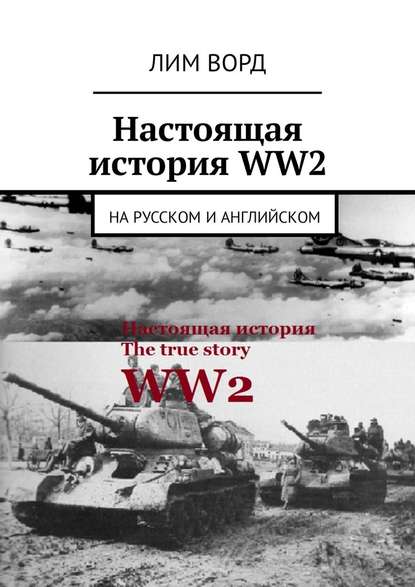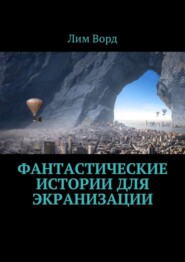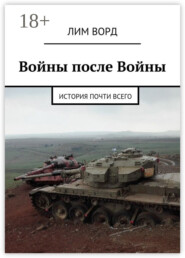По всем вопросам обращайтесь на: info@litportal.ru
(©) 2003-2024.
✖
Настоящая история WW2. На русском и английском
Настройки чтения
Размер шрифта
Высота строк
Поля
You can now recall the current series «The Game of Thrones». To rephrase: «The Army of the Dead is coming from the West, and they do not accept any negotiations. We must fight together, despite the differences».
The Battle of Stalingrad
On July 17, 1942, the first fighting clashes began at Stalingrad. The correlation of forces is not in favor of the Red Army: 187,000 people, 300 tanks, 500 aircraft against 270,000 soldiers and officers, 400 tanks, and 1,200 aircraft. On Aug. 23, Richthofen’s air fleet drops 2000 tons of bombs on the city, turning it into a heap of debris that is practically unsuitable for the movement of tanks. This is the beginning of the destruction, including 300,000 civilians, including refugees from Leningrad, who, on the orders of Stalin, or, in general, in the spirit of the times, were refused timely evacuation. The maneuver war turns into a positional one. This is the first battle in which German soldiers admit they see more corpses of their «genossa» on the streets than an enemy soldier. By November the Wehrmacht lost 700,000 people, the Red Army 644,000.
For incomprehensible reasons, reconnaissance planes of the Luftwaffe cease to fly beyond the Volga; when such flights still take place, the German command simply does not have time to realize the scale of the approaching threat.
On November 19, the Red Army launched an offensive from the flanks: a 330,000-strong group of German-Romanian troops entered the encirclement ring. For their supply, the same officer, who six months ago successfully carried out the transfer of goods to the demyansky cauldron, is responsible for this, but this is another case. The Luftwaffe loses not less than 500 transport planes alone, in difficult weather conditions, from the work of Soviet air defense and deep tank raids to airfields.
In the historical literature it is widely believed that, here, «as many as seven Soviet armies clung to one German». However, in the first place, as a rule, the German units are larger than the Soviet one and a half times, and secondly, in addition to the 6th Paulus army, the following took part in the hostilities: the 4th Gotha Tank Army (one of the divisions was surrounded), the 8th Army, I the Italian army named Garibaldi, Hungarian 2nd Army, 3rd and 4th Romanian armies. You can also recall the troops of Guderian from the outside of the ring. The Magyars are distinguished by special military zeal and cruelty to the peaceful population, so they are not taken prisoner.
Paulus asks Hitler about the evacuation of «… individual specialists – soldiers and officers, who can be used in further combat operations. The order for this should be given as soon as possible, since soon the landing of aircraft will become impossible. Officers please indicate by name. Of course, I can not speak about me».
Hitler responds with a refusal. The spirit of the military brotherhood of Germany is now most important. Only the wounded are evacuated. At the same time the leader raises the title of Paulus from the colonel-general to the field marshal, expecting that this will somewhat brighten the officer’s health before shooting into the temple. But, as is known, the F?hrer’s favorite (as well as many other higher ranks of the 6th Army) will not justify his hope.
Later, the provision on the German military brotherhood is greatly shaken, and the officers, as the most valuable cadres of the army (as well as the SS men) are evacuated from the «boilers» in the first place.
For the first time it happens like this: with the dispassionate voice from the U-2 aircraft flying over the city at low altitude, through the loudspeaker, to the German soldiers, as defeated and worthy of pity, the Red Army agitators offer to lay down their arms. On January 31, the Southern grouping with Paulus surrenders, on February 2, the Northern group separated from it; 90,000 only German soldiers (total, according to some sources 200,000). The officers are separated from the rank and file; after the treatment, they are sent to the comfortable settlements in the docked cars. On February 2, a press conference will be held for Soviet and foreign journalists, with the participation of Field Marshal Paulus and 22 generals. Private soldiers have to learn the conditions of life in the Soviet camps, not yet fully adapted to receive such a large number of prisoners of war, but survivors subsequently become their elite. The total result of the battle: the losses of the Red Army: 1.1 million people, 4,300 tanks, 2,770 aircraft, the Wehrmacht 1,1 million people. (as well as prisoners), 1,700 tanks, 2,800 combat and transport aircraft.
Sent films on the topic: «Stalingrad» and «Iron Cross», the directors of Germany, as well as «Hot Snow» («Горячий Снег») of Bondarchuk. More made-of-the-soul and professionally Soviet paintings in the Great Patriotic War (with detailed battle scenes, etc.) for the present (summer 2017), according to the author of the book, does not exist.
An interesting idea for the film is in the book by Ilya Boyashov: «Tankman or «White Tiger». («Танкист или «Белый Тигр», author Илья Бояшов)
Only James Cameron could understand the tankman communicating with the spirits of the tanks.
If you can, let him know…
1. IL-2
2. Su-2
3. U-2
4. «Stuck», Sturzkampfflugzeug
5. 251 Sonderkraftfahrzeug
6. The battle on the outskirts of the city of Kalach-na-Donu.
7. ....Captured German soldiers in Stalingrad
8. «Tiger» in Kharkov Street
9. PPSh
10. MР-40
11. …Employees of the RKKA health battalion
12. Lydia Vladimirovna Litvyak
1. IL-2. Crew of 1—2 people. The nickname in the German parts is the quite respectable «Butcher» («Fleischer») or «Black Death» («Schwarztodt»), and also «Cement Bomber». Armament – two 23-mm. guns, 150 rounds per barrel, two 7, 62 mm. machine gun, with 750 rounds, one 12, 7 mm. defensive machine gun in the rear cabin. Armor, covering the pilot (but not the machine gunner) and the main technical nodes – 12 mm. For the indecision of the pilot could be re-qualified as a rifleman. The standard bomb load is 400 kg., four 82 mm. or 132 mm. rockets (the total weight of the RS is about 80 kg). The speed of the land is 386 km. h, at an altitude of 1200 m – 404 km. h. Diving angle – up to 45 degrees. The range of flight is 720 km. The average percentage of losses – 2.8% (but until 1943 for 30 combat sorties the survivor was awarded the title of Hero of the Soviet Union). 36 000 units have been produced. Currently, there is only one rebuilt and flying IL-2 – it is in the US.
2. Su-2. Soviet near bomber aircraft designer Pavel Sukhoi (born in Vitebsk region), the first aircraft of the famous line of Su models, taking part in hostilities. Crew 2 people, speed 470 km. h, range 900 km, small arms 2 SHKAS mobile machine guns (covered with the opening cockpit cover) and 4 fixed, 8 Nursa, bomb load 400 kg. From 1940 to the beginning of 1942, 893 cars are produced, after the evacuation of machine sets is exhausted, production ceases. By the beginning of full-scale military operations, the aircraft (profile, etc.) is classified from its troops, therefore, the Soviet air force is not uncommon in its attack. So, on June 22, the unidentified Su-2 is stymied by the future Soviet ace, Alexander Pokryshkin (the pilot is killed). Since mid-1943, having a cab with a high visibility, the aircraft is usually used as an air raid. So far, little is known about the role of the Su-2 in the Patriotic War. All surviving aircraft are cut to scrap metal, in the Volgograd Museum there is a single full-size copy.
Su-2 shows good results in the bombing of enemy troops, in addition, its losses are relatively low: 1 aircraft for 23 sorties, with an average ratio of losses of other bombers Air Force of the USSR in the first half of the war – 1:14.
3. U-2 (since 1944 – Po-2, named after the designer, Nikolai Polikarpov), according to the NATO codification – Mule – «Mule». The German nickname, because of the characteristic sound of the engine – «N?hmaschine» – «SewingMachine». Soviet multi-purpose biplane. The flying weight of the training airplane is 1012 kg, bomber and ambulance aircraft – 1400 kg. Engine power 125 liters. from. The speed is from 60 to 140 km. h. The main bomb load is 250 kg, and up to 500 kg. In some cases, the aircraft is equipped with 7.62 mm. a machine gun to protect the rear hemisphere. Takeoff and run at takeoff and landing – 100—120 m. Since 1927, 33 000 copies have been produced.
As a light-engine night bomber, the U-2 shows itself with the best of luck. The losses of Po-2 are relatively small, some pilots during the war make about 1000 sorties. The main idea: approach to the target with the engine off, dropping bombs on any light source in the area where the enemy forces are deployed. Overnight one biplane produces up to twelve bombardments.
U-2 is a difficult target for German high-speed aircraft precisely because of its weakness – low speed. So, for example, for «Messershmit-109» the maximum speed of Po-2 corresponds to the minimum speed of «stalling» the fighter.
U-2 can be equipped with additional gondolas under the wings, for the evacuation of 6 wounded. In February 1943, from the Osveya-Polotsk-Sebezh (Belorussia) region, to avoid destruction by Latvian and Ukrainian collaborators, Po-2 takes out several dozen children for the flight.
4. «Stuck», Sturzkampfflugzeug (German – dive bomber), he is also a «Laptevnik» because of non-retractable landing gear, Junkers-87. It has a window in the floor of the cabin, an air brake, a siren, for psychological impact, as well as determining by ear the speed of the aircraft when diving. At the moment of reset, the bombs are pushed out by the screw with a special mechanism, after which the aircraft is withdrawn from the peak. Crew of one or two people. Armament – in the anti-tank version two 37-mm. guns with shops for 6 shells of tungsten carbide, two 7, 92 mm. machine gun, the standard bomb load from 250 to 700 kg (depending on the modifications). The diving angle is up to 90 degrees. The maximum speed is 310 – 408 km. h, the flight range of 800 – 1165 km. 6500 units are produced.
There is an opinion that «Junkers-87» with 37-mm. the gun proved to be unusually effective against tanks. An example is the effectiveness of Hans Rudel, who, according to him, destroyed 519 Soviet armored cars, 800 trucks, 60 barges, etc. At the same time, he himself (who seems to have a considerable stock of lives) was shot down 32 times, completely disabling the aircraft. So, with the ratio of losses: one stormtrooper – 16 tanks, the pilot is awarded admission from Hitler and the Knight’s Cross with Diamonds. If we divide the victories declared by the Germans, at the suggestion of the British historians by three, one Junkers for 5 armored vehicles.
According to other sources, there are so many shelled-scratched Soviet armored vehicles in the entire 4th group of Hans Rudel, in 16—18 cars; according to the German tradition, they were all recorded on the account of the commander.
5. German semi-track armored personnel carrier Sd. Kfz. 251 Sonderkraftfahrzeug. Weight 9 tons, the crew of 2 people, as well as 10 paratroopers. Staffing: 1—2 MG-42 machine guns, and also, with minimal changes in design – mortars, guns (of various types, including captured ones), large-caliber anti-aircraft machine guns, flamethrowers, rocket launchers. Reservation – the forehead of the body is 10—15 mm., The board is 8—14 mm., The roof (partial protection) and the bottom – 6—8 mm. The speed along the highway is 53 km. h, power reserve 300 km., specific power 10.3 hp. From 1939 to March 1945, 15252 units were produced. Together with Sonderkraftfahrzeug 250, similar in characteristics to the German armored personnel carrier, released in the number of 7326 copies, Sd. Kfz. 251 was the basis of a large family of machines for various purposes. The index «251» shows how many total there are series of half-tracked conveyors, by the sum of combat qualities, among other things, approaching the T-3 tanks (an approximate analogue of the Soviet T-26), or even T-4 first issues. The total number of such machines is difficult to calculate, in the first approximation one can safely voice the number «30 000».
In the Red Army (the Soviet Army) and, by and large, in the Allied forces, armored personnel carriers of mass distribution do not receive.
Sanitary version of the German (here, probably – trophy) armored personnel carrier. Quite high profile, convenient rear hatch, partially open roof contribute to the high habitation of the machine, and therefore, the preservation of the combat potential of soldiers.
6. … The battle on the outskirts of the city of Kalach-na-Donu. Here, on November 23, 1942, the ring around the group of German fascist troops closed.
7. ....Captured German soldiers in Stalingrad
8. «Tiger» in Kharkov Street – the last successful large-scale counterattack of the German army.
9. Soviet submachine gun PPSh. Designed in 1940 by designer GM Shpagin, at the end of the same year it was adopted. The cartridge is 7.62 ? 25 mm., The initial speed of the bullet is 500 ms. (almost twice as high as that of the distant analogue, the «gangster» Thompson), the rate of fire of 1000 rounds per minute. The aiming range is 200—300 m. The weight of the loaded 5.2 kg. Capacity of the drum shop is 71 cartridges, sector (carob, accepted in 1943) 35 cartridges. Possibility of conducting single shots. In 1942, tested, very similar to the Kalashnikov assault rifle, PPSh-2, but, he concedes (above all, over excessive weight) the PPS A. Sudaev. Until the end of 1941, 0.9 million units were produced, total, from 1941 to 1947 – 6 million. The Soviet military noted a slightly lower reliability of the PPS, in comparison with the German so-called. «Schmeisser», however, it’s just such a psychological moment. Alien, as a rule, always seems the best. German soldiers and officers on the contrary, believe the PPSh to be more accurate than the MR-40, the SS seek to equip their advanced elite units with captured Soviet automatic weapons. In addition to the PPSh, Mosin’s rifles and self-loading SVTs «work» on the front. «Self-charging» Tokarev – a good weapon, however, it requires a special relationship. To fully assess its potential only able to have passed into the infantry, accustomed to handling complex technology seamen.
10. German submachine gun MР-40 («Maschinenpistole» or, traditionally, «Schmeisser»). Designed by Heinrich Vollmer on the basis of MR-36 (with a wooden butt). Hugo Schmeisser has a patent for the store to the machine, which is evidenced by the corresponding inscription on the horn; and therefore the MR-40 acquires such a second name. The cartridge is 9 ? 19 mm, the initial velocity of the bullet, depending on its purpose is 320—400 ms, the rate of fire is 540—600 rounds per minute. The curb weight is 4.8 kg. The magazine capacity is 20, 25, 32 (as a rule), 40, 50 rounds. The ability to fire single shots – by quickly pressing the trigger. From 1938 to 1945, 1.1 million units were manufactured.
The main weapon of the Wehrmacht infantry is the Mauser 98k rifle. Weight 4 kg, cartridge 7.92 ? 57 mm., The initial speed of the bullet is 760 m.s, aiming range is 1500 m. The store contains 5 cartridges. The firing rate of 15 rounds per minute exceeds the similar characteristics of the Mosin rifle due to the bent trigger, allowing to shoot, without reducing the barrel from the line of sight. At the same time, the aiming range of the last shot, due to the higher velocity of the bullet (870 ms), is two kilometers above.
From 1935 to 1945, 14 million copies were produced. Some rifles are still in use, like hunting rifled weapons.
11. …Employees of the RKKA health battalion. Almost all military doctors, who had the right to do so, changed their profession after the war.
9. Lydia Vladimirovna Litvyak, fighter pilot, Hero of the Soviet Union. Birth – August 18 (Aviation Day), 1921, Moscow. From the age of 14 – classes in the flying club, getting a trip to one of the few aviation schools, taking girls – Kherson, returning to the capital, work at the Kalinin aeroclub (in place of the current microdistrict «Yuzhny»), training 45 pilots. Lydia’s father, a railroad worker, V. Litvyak, was shot in 1937 (when his daughter commits the first independent flight). This can be hidden for the time being. In 1942, the girl sought enrollment in 586 «female», created on the initiative, already very famous Marina Raskova fighter regiment. First, it is remembered by a fashionista who changes fur from the umb to the collar (and is serving for that day’s arrest), a lover of long scarves made of parachute silk, but since August 1942 – a very effective fighter pilot. In the sky of Stalingrad, Lydia shoots down two Yu-88s, two Me-109s and one D0—217, becoming the world’s first female pilot to personally shoot down the enemy’s plane. The nickname or, originally, the self-name of Lydia, who probably does not like the somewhat firm «D» in her name – «Lily». The image of the flower appears on the fuselage Yak-1. Sometimes a lily painted by a regimental artist is considered a rose, because the flying girl is alternately called the «White Rose (and, or Lily) of Stalingrad.»
The Battle of Stalingrad
On July 17, 1942, the first fighting clashes began at Stalingrad. The correlation of forces is not in favor of the Red Army: 187,000 people, 300 tanks, 500 aircraft against 270,000 soldiers and officers, 400 tanks, and 1,200 aircraft. On Aug. 23, Richthofen’s air fleet drops 2000 tons of bombs on the city, turning it into a heap of debris that is practically unsuitable for the movement of tanks. This is the beginning of the destruction, including 300,000 civilians, including refugees from Leningrad, who, on the orders of Stalin, or, in general, in the spirit of the times, were refused timely evacuation. The maneuver war turns into a positional one. This is the first battle in which German soldiers admit they see more corpses of their «genossa» on the streets than an enemy soldier. By November the Wehrmacht lost 700,000 people, the Red Army 644,000.
For incomprehensible reasons, reconnaissance planes of the Luftwaffe cease to fly beyond the Volga; when such flights still take place, the German command simply does not have time to realize the scale of the approaching threat.
On November 19, the Red Army launched an offensive from the flanks: a 330,000-strong group of German-Romanian troops entered the encirclement ring. For their supply, the same officer, who six months ago successfully carried out the transfer of goods to the demyansky cauldron, is responsible for this, but this is another case. The Luftwaffe loses not less than 500 transport planes alone, in difficult weather conditions, from the work of Soviet air defense and deep tank raids to airfields.
In the historical literature it is widely believed that, here, «as many as seven Soviet armies clung to one German». However, in the first place, as a rule, the German units are larger than the Soviet one and a half times, and secondly, in addition to the 6th Paulus army, the following took part in the hostilities: the 4th Gotha Tank Army (one of the divisions was surrounded), the 8th Army, I the Italian army named Garibaldi, Hungarian 2nd Army, 3rd and 4th Romanian armies. You can also recall the troops of Guderian from the outside of the ring. The Magyars are distinguished by special military zeal and cruelty to the peaceful population, so they are not taken prisoner.
Paulus asks Hitler about the evacuation of «… individual specialists – soldiers and officers, who can be used in further combat operations. The order for this should be given as soon as possible, since soon the landing of aircraft will become impossible. Officers please indicate by name. Of course, I can not speak about me».
Hitler responds with a refusal. The spirit of the military brotherhood of Germany is now most important. Only the wounded are evacuated. At the same time the leader raises the title of Paulus from the colonel-general to the field marshal, expecting that this will somewhat brighten the officer’s health before shooting into the temple. But, as is known, the F?hrer’s favorite (as well as many other higher ranks of the 6th Army) will not justify his hope.
Later, the provision on the German military brotherhood is greatly shaken, and the officers, as the most valuable cadres of the army (as well as the SS men) are evacuated from the «boilers» in the first place.
For the first time it happens like this: with the dispassionate voice from the U-2 aircraft flying over the city at low altitude, through the loudspeaker, to the German soldiers, as defeated and worthy of pity, the Red Army agitators offer to lay down their arms. On January 31, the Southern grouping with Paulus surrenders, on February 2, the Northern group separated from it; 90,000 only German soldiers (total, according to some sources 200,000). The officers are separated from the rank and file; after the treatment, they are sent to the comfortable settlements in the docked cars. On February 2, a press conference will be held for Soviet and foreign journalists, with the participation of Field Marshal Paulus and 22 generals. Private soldiers have to learn the conditions of life in the Soviet camps, not yet fully adapted to receive such a large number of prisoners of war, but survivors subsequently become their elite. The total result of the battle: the losses of the Red Army: 1.1 million people, 4,300 tanks, 2,770 aircraft, the Wehrmacht 1,1 million people. (as well as prisoners), 1,700 tanks, 2,800 combat and transport aircraft.
Sent films on the topic: «Stalingrad» and «Iron Cross», the directors of Germany, as well as «Hot Snow» («Горячий Снег») of Bondarchuk. More made-of-the-soul and professionally Soviet paintings in the Great Patriotic War (with detailed battle scenes, etc.) for the present (summer 2017), according to the author of the book, does not exist.
An interesting idea for the film is in the book by Ilya Boyashov: «Tankman or «White Tiger». («Танкист или «Белый Тигр», author Илья Бояшов)
Only James Cameron could understand the tankman communicating with the spirits of the tanks.
If you can, let him know…
1. IL-2
2. Su-2
3. U-2
4. «Stuck», Sturzkampfflugzeug
5. 251 Sonderkraftfahrzeug
6. The battle on the outskirts of the city of Kalach-na-Donu.
7. ....Captured German soldiers in Stalingrad
8. «Tiger» in Kharkov Street
9. PPSh
10. MР-40
11. …Employees of the RKKA health battalion
12. Lydia Vladimirovna Litvyak
1. IL-2. Crew of 1—2 people. The nickname in the German parts is the quite respectable «Butcher» («Fleischer») or «Black Death» («Schwarztodt»), and also «Cement Bomber». Armament – two 23-mm. guns, 150 rounds per barrel, two 7, 62 mm. machine gun, with 750 rounds, one 12, 7 mm. defensive machine gun in the rear cabin. Armor, covering the pilot (but not the machine gunner) and the main technical nodes – 12 mm. For the indecision of the pilot could be re-qualified as a rifleman. The standard bomb load is 400 kg., four 82 mm. or 132 mm. rockets (the total weight of the RS is about 80 kg). The speed of the land is 386 km. h, at an altitude of 1200 m – 404 km. h. Diving angle – up to 45 degrees. The range of flight is 720 km. The average percentage of losses – 2.8% (but until 1943 for 30 combat sorties the survivor was awarded the title of Hero of the Soviet Union). 36 000 units have been produced. Currently, there is only one rebuilt and flying IL-2 – it is in the US.
2. Su-2. Soviet near bomber aircraft designer Pavel Sukhoi (born in Vitebsk region), the first aircraft of the famous line of Su models, taking part in hostilities. Crew 2 people, speed 470 km. h, range 900 km, small arms 2 SHKAS mobile machine guns (covered with the opening cockpit cover) and 4 fixed, 8 Nursa, bomb load 400 kg. From 1940 to the beginning of 1942, 893 cars are produced, after the evacuation of machine sets is exhausted, production ceases. By the beginning of full-scale military operations, the aircraft (profile, etc.) is classified from its troops, therefore, the Soviet air force is not uncommon in its attack. So, on June 22, the unidentified Su-2 is stymied by the future Soviet ace, Alexander Pokryshkin (the pilot is killed). Since mid-1943, having a cab with a high visibility, the aircraft is usually used as an air raid. So far, little is known about the role of the Su-2 in the Patriotic War. All surviving aircraft are cut to scrap metal, in the Volgograd Museum there is a single full-size copy.
Su-2 shows good results in the bombing of enemy troops, in addition, its losses are relatively low: 1 aircraft for 23 sorties, with an average ratio of losses of other bombers Air Force of the USSR in the first half of the war – 1:14.
3. U-2 (since 1944 – Po-2, named after the designer, Nikolai Polikarpov), according to the NATO codification – Mule – «Mule». The German nickname, because of the characteristic sound of the engine – «N?hmaschine» – «SewingMachine». Soviet multi-purpose biplane. The flying weight of the training airplane is 1012 kg, bomber and ambulance aircraft – 1400 kg. Engine power 125 liters. from. The speed is from 60 to 140 km. h. The main bomb load is 250 kg, and up to 500 kg. In some cases, the aircraft is equipped with 7.62 mm. a machine gun to protect the rear hemisphere. Takeoff and run at takeoff and landing – 100—120 m. Since 1927, 33 000 copies have been produced.
As a light-engine night bomber, the U-2 shows itself with the best of luck. The losses of Po-2 are relatively small, some pilots during the war make about 1000 sorties. The main idea: approach to the target with the engine off, dropping bombs on any light source in the area where the enemy forces are deployed. Overnight one biplane produces up to twelve bombardments.
U-2 is a difficult target for German high-speed aircraft precisely because of its weakness – low speed. So, for example, for «Messershmit-109» the maximum speed of Po-2 corresponds to the minimum speed of «stalling» the fighter.
U-2 can be equipped with additional gondolas under the wings, for the evacuation of 6 wounded. In February 1943, from the Osveya-Polotsk-Sebezh (Belorussia) region, to avoid destruction by Latvian and Ukrainian collaborators, Po-2 takes out several dozen children for the flight.
4. «Stuck», Sturzkampfflugzeug (German – dive bomber), he is also a «Laptevnik» because of non-retractable landing gear, Junkers-87. It has a window in the floor of the cabin, an air brake, a siren, for psychological impact, as well as determining by ear the speed of the aircraft when diving. At the moment of reset, the bombs are pushed out by the screw with a special mechanism, after which the aircraft is withdrawn from the peak. Crew of one or two people. Armament – in the anti-tank version two 37-mm. guns with shops for 6 shells of tungsten carbide, two 7, 92 mm. machine gun, the standard bomb load from 250 to 700 kg (depending on the modifications). The diving angle is up to 90 degrees. The maximum speed is 310 – 408 km. h, the flight range of 800 – 1165 km. 6500 units are produced.
There is an opinion that «Junkers-87» with 37-mm. the gun proved to be unusually effective against tanks. An example is the effectiveness of Hans Rudel, who, according to him, destroyed 519 Soviet armored cars, 800 trucks, 60 barges, etc. At the same time, he himself (who seems to have a considerable stock of lives) was shot down 32 times, completely disabling the aircraft. So, with the ratio of losses: one stormtrooper – 16 tanks, the pilot is awarded admission from Hitler and the Knight’s Cross with Diamonds. If we divide the victories declared by the Germans, at the suggestion of the British historians by three, one Junkers for 5 armored vehicles.
According to other sources, there are so many shelled-scratched Soviet armored vehicles in the entire 4th group of Hans Rudel, in 16—18 cars; according to the German tradition, they were all recorded on the account of the commander.
5. German semi-track armored personnel carrier Sd. Kfz. 251 Sonderkraftfahrzeug. Weight 9 tons, the crew of 2 people, as well as 10 paratroopers. Staffing: 1—2 MG-42 machine guns, and also, with minimal changes in design – mortars, guns (of various types, including captured ones), large-caliber anti-aircraft machine guns, flamethrowers, rocket launchers. Reservation – the forehead of the body is 10—15 mm., The board is 8—14 mm., The roof (partial protection) and the bottom – 6—8 mm. The speed along the highway is 53 km. h, power reserve 300 km., specific power 10.3 hp. From 1939 to March 1945, 15252 units were produced. Together with Sonderkraftfahrzeug 250, similar in characteristics to the German armored personnel carrier, released in the number of 7326 copies, Sd. Kfz. 251 was the basis of a large family of machines for various purposes. The index «251» shows how many total there are series of half-tracked conveyors, by the sum of combat qualities, among other things, approaching the T-3 tanks (an approximate analogue of the Soviet T-26), or even T-4 first issues. The total number of such machines is difficult to calculate, in the first approximation one can safely voice the number «30 000».
In the Red Army (the Soviet Army) and, by and large, in the Allied forces, armored personnel carriers of mass distribution do not receive.
Sanitary version of the German (here, probably – trophy) armored personnel carrier. Quite high profile, convenient rear hatch, partially open roof contribute to the high habitation of the machine, and therefore, the preservation of the combat potential of soldiers.
6. … The battle on the outskirts of the city of Kalach-na-Donu. Here, on November 23, 1942, the ring around the group of German fascist troops closed.
7. ....Captured German soldiers in Stalingrad
8. «Tiger» in Kharkov Street – the last successful large-scale counterattack of the German army.
9. Soviet submachine gun PPSh. Designed in 1940 by designer GM Shpagin, at the end of the same year it was adopted. The cartridge is 7.62 ? 25 mm., The initial speed of the bullet is 500 ms. (almost twice as high as that of the distant analogue, the «gangster» Thompson), the rate of fire of 1000 rounds per minute. The aiming range is 200—300 m. The weight of the loaded 5.2 kg. Capacity of the drum shop is 71 cartridges, sector (carob, accepted in 1943) 35 cartridges. Possibility of conducting single shots. In 1942, tested, very similar to the Kalashnikov assault rifle, PPSh-2, but, he concedes (above all, over excessive weight) the PPS A. Sudaev. Until the end of 1941, 0.9 million units were produced, total, from 1941 to 1947 – 6 million. The Soviet military noted a slightly lower reliability of the PPS, in comparison with the German so-called. «Schmeisser», however, it’s just such a psychological moment. Alien, as a rule, always seems the best. German soldiers and officers on the contrary, believe the PPSh to be more accurate than the MR-40, the SS seek to equip their advanced elite units with captured Soviet automatic weapons. In addition to the PPSh, Mosin’s rifles and self-loading SVTs «work» on the front. «Self-charging» Tokarev – a good weapon, however, it requires a special relationship. To fully assess its potential only able to have passed into the infantry, accustomed to handling complex technology seamen.
10. German submachine gun MР-40 («Maschinenpistole» or, traditionally, «Schmeisser»). Designed by Heinrich Vollmer on the basis of MR-36 (with a wooden butt). Hugo Schmeisser has a patent for the store to the machine, which is evidenced by the corresponding inscription on the horn; and therefore the MR-40 acquires such a second name. The cartridge is 9 ? 19 mm, the initial velocity of the bullet, depending on its purpose is 320—400 ms, the rate of fire is 540—600 rounds per minute. The curb weight is 4.8 kg. The magazine capacity is 20, 25, 32 (as a rule), 40, 50 rounds. The ability to fire single shots – by quickly pressing the trigger. From 1938 to 1945, 1.1 million units were manufactured.
The main weapon of the Wehrmacht infantry is the Mauser 98k rifle. Weight 4 kg, cartridge 7.92 ? 57 mm., The initial speed of the bullet is 760 m.s, aiming range is 1500 m. The store contains 5 cartridges. The firing rate of 15 rounds per minute exceeds the similar characteristics of the Mosin rifle due to the bent trigger, allowing to shoot, without reducing the barrel from the line of sight. At the same time, the aiming range of the last shot, due to the higher velocity of the bullet (870 ms), is two kilometers above.
From 1935 to 1945, 14 million copies were produced. Some rifles are still in use, like hunting rifled weapons.
11. …Employees of the RKKA health battalion. Almost all military doctors, who had the right to do so, changed their profession after the war.
9. Lydia Vladimirovna Litvyak, fighter pilot, Hero of the Soviet Union. Birth – August 18 (Aviation Day), 1921, Moscow. From the age of 14 – classes in the flying club, getting a trip to one of the few aviation schools, taking girls – Kherson, returning to the capital, work at the Kalinin aeroclub (in place of the current microdistrict «Yuzhny»), training 45 pilots. Lydia’s father, a railroad worker, V. Litvyak, was shot in 1937 (when his daughter commits the first independent flight). This can be hidden for the time being. In 1942, the girl sought enrollment in 586 «female», created on the initiative, already very famous Marina Raskova fighter regiment. First, it is remembered by a fashionista who changes fur from the umb to the collar (and is serving for that day’s arrest), a lover of long scarves made of parachute silk, but since August 1942 – a very effective fighter pilot. In the sky of Stalingrad, Lydia shoots down two Yu-88s, two Me-109s and one D0—217, becoming the world’s first female pilot to personally shoot down the enemy’s plane. The nickname or, originally, the self-name of Lydia, who probably does not like the somewhat firm «D» in her name – «Lily». The image of the flower appears on the fuselage Yak-1. Sometimes a lily painted by a regimental artist is considered a rose, because the flying girl is alternately called the «White Rose (and, or Lily) of Stalingrad.»
Вы ознакомились с фрагментом книги.
Приобретайте полный текст книги у нашего партнера:
Приобретайте полный текст книги у нашего партнера:











